 |
 |
 |
| |
Daily Variations- HIV & Immunity, T-Cell Exhaustion in Vertically Acquired HIV-children/adolescents/adults
|
| |
| |
Daily immunological and virological variations in aviremic ART-treated people living with HIV
Download the PDF here
IAS 2021 July 18-21
Presenter
Debashree Chatterjee
Authors
D. Chatterjee * (1,2), T.R. Wiche Salinas (2), Y. Zhang (2), A. Fert (2), D. Planas (2), A. Cattin (2), E. Moreira Gabriel (2), L. Raymond Marchand (1), C.-D Ngassaki-Yoka (2), J. Girouard (3), N. Cermakian (4), D. E. Kaufmann (2), J.-P.R. Routy (5), P. Ancuta (1)
Institutions
(1) Centre de Recherche du CHUM, Montreal, Canada, (2) University of Montreal, Montreal, Canada, (3) McGill University Health Centre Research Institute, Montreal, Canada, (4) McGill University, Montreal, Canada, (5) McGill University Health Centre, Glen site, Montreal, Canada
BACKGROUND: Biological functions fluctuate in a circadian manner to align with environmental changes. In healthy uninfected individuals, variations in T-cell trafficking are documented in the blood, with nadir CD4 counts observed in the morning. Daily variations are also observed for plasma cortisol and melatonin, two key regulators of immune functions. HIV infection is associated with profound alterations in CD4 T-cell homeostasis and chronic immune activation. Noteworthy, among multiple transcription factors contributing to HIV transcription, the circadian clock master regulator BMAL1 plays an important role. However, daily variations in immunological/virological parameters in people living with HIV (PLWH) receiving antiretroviral therapy (ART) remain poorly investigated.
DESCRIPTION: Eleven ART-treated PLWH (median CD4 counts: 606 cells/ml; age: 57 years; time since infection: 242 months; aviremia under ART: 216 months) were hospitalized at the CRCHUM Phase I Clinic a Friday afternoon for 40 hours. Starting the next morning, blood was collected/processed every 4 hours for 24 hours, before food intake. Polychromatic flow cytometry allowed cell counting/phenotypic analysis on fresh blood. Plasma levels of cortisol/melatonin and markers of mucosal barrier impairment (FABP2, LBP) were measured by ELISA. Cell-associated HIV DNA/RNA were quantified by PCR on flow cytometry sorted CD4+ T-cells.
LESSONS LEARNED: Similar to HIV-uninfected controls, daily variations in plasma cortisol (peak 4:00-8:00) and melatonin (peak 4:00) levels were observed in ART-treated PLWH. The memory/naive/regulatory T-cell counts showed daily variations, with maximal counts observed 20:00-4:00 (nadir 12:00). The expression of the HIV co-receptors CCR5/CXCR4, gut-homing molecules CCR6/integrin A/7, and the immune checkpoint PD-1 on memory T-cells also showed maximal expression 20:00-4:00. Pro-inflammatory non-classical monocytes were abundant 8:00-00:00 and dropped significantly at 4:00. Plasma FABP2 levels peaked at 4:00, while LBP levels significantly dropped at 4:00. While integrated HIV-DNA levels were stable, HIV-RNA levels were higher in cells collected at night versus morning, indicative of superior HIV transcription.
CONCLUSIONS: Daily variations in melatonin/cortisol levels, blood T-cell/myeloid counts, mucosal permeability markers, and HIV transcription were observed in a cohort of ART-treated PLWH. These findings provide a rationale for studying the role of the circadian clock machinery in regulating residual HIV transcription during ART, with relevance for cure interventions.
--------------------------------------
Impact of age on T cell exhaustion in children, adolescents and adults with vertically acquired HIV infection
IAS 2021
Hinatea Dieumegard
Authors
H. Dieumegard * (1,2), D.G. Ransy (2), A. Bitnun (3,4), J. Brophy (5,6), L. Samson (5,6), F. Kakkar (7,8), M.T. Hawkes (9), S. Read (3,4), A. Le Campion (2), H. Soudeyns (1,2,7,8), EPIC4 Study Group
Institutions
(1) Unite d'Immunopathologie Virale, Centre de Recherche du CHU Sainte-Justine, Montreal, Canada, (2) Departement de Microbiologie, Infectiologie et Immunologie, Faculte de Medecine, Universite de Montreal, Montreal, Canada, (3) Hospital for Sick Children, Toronto, Canada, (4) Department of Pediatrics, University of Toronto, Toronto, Canada, (5) Children's Hospital of Eastern Ontario, Ottawa, Canada, (6) Department of Pediatrics, University of Ottawa, Ottawa, Canada, (7) Centre d''Infectiologie Mère-enfant, Centre de Recherche du CHU Sainte-Justine, Montreal, Canada, (8) Departement de Pediatrie, Faculte de Medecine, Universite de Montreal, Montreal, Canada, (9) Department of Pediatrics, University of Alberta, Edmonton, Canada
In adults with chronic viral infections, including HIV/AIDS, persistent antigen exposure leads to progressive loss of T cell function and T cell exhaustion, which interferes with the efficacy and maintenance of virus-specific cell-mediated immunity. To determine whether the extent and dynamics of T cell exhaustion vary as a function of age, we characterized cell surface expression of immune check point inhibitors (ICIs) that are associated with T cell exhaustion in children, adolescents and young adults who were infected with HIV by vertical transmission.
CONCLUSIONS: Higher proportions of CD4+ and CD8+ CM and EM T cells expressing combinations of exhaustion markers in younger children as compared to adolescents and adults suggest impairment of cell-mediated immunity that could contribute to the differential course of HIV infection observed between children and adults.
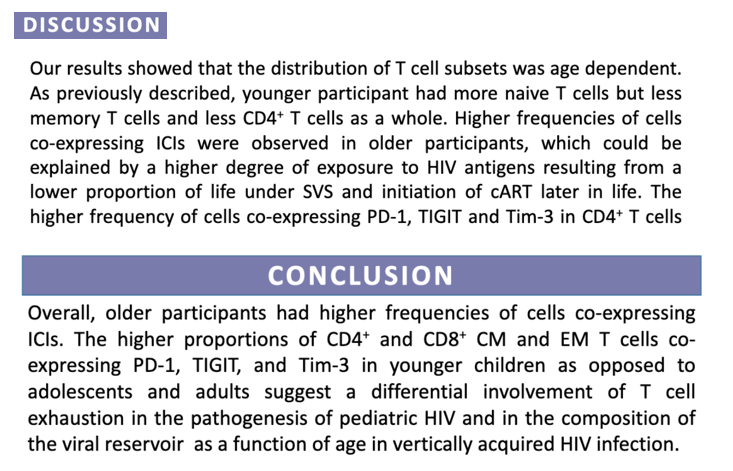
BACKGROUND: In adults with chronic viral infections, including HIV/AIDS, persistent antigen exposure leads to progressive loss of T cell function and T cell exhaustion, which interferes with the efficacy and maintenance of virus-specific cell-mediated immunity. To determine whether the extent and dynamics of T cell exhaustion vary as a function of age, we characterized cell surface expression of immune checkpoint inhibitors that are associated with T cell exhaustion in children, adolescents and young adults who were infected with HIV by vertical transmission.
METHODS: Multi-parameter flow cytometry was used to measure expression of cell-surface markers associated with T cell exhaustion (PD-1, CD160, CTLA-4, LAG-3, TIGIT, Tim-3) on peripheral blood mononuclear cells from study participants who were enrolled in the Early Pediatric Initiation, Canada Child Cure Cohort Study (EPIC4).
RESULTS: Study participants (n=65; median age=14.82 years, IQR=10.23-18.02 years) were stratified based on their age (0-10, 10-18 and 18-26 years). Sex, viral load at the time of sample collection, and proportion of life under sustained viral suppression were not significantly different between the 3 groups. Frequencies of CD4+ central memory (CM), CD4+ effector memory (EM), and CD8+ CM cells were positively correlated with age of participants (p<0.0001, p=0.0224, p=0.0022), whereas frequencies of naïve (N) CD4+ and CD8+ T cells were negatively correlated with age (p<0.0001, p=0.0313). A significantly higher proportion of CD8+ CM and CD8+ EM expressing Tim-3 was observed in younger as compared to older participants (p=0.0061, p=0.0006). Negative correlations were found between age and frequencies of CD4+ CM (p=0.0029), CD4+ EM (p=0.0478), CD8+ CM (p=0.0201) and CD8+ EM (p=0.0076) cells co-expressing PD-1, TIGIT, and Tim-3. In younger participants, significantly higher proportions of cells co-expressing PD-1, CD160 and Tim-3 were observed in CD4+ CM, CD4+ EM, CD8+ CM, and CD8+ EM as compared to the 2 other groups (all p values <0.0384).
CONCLUSIONS: Higher proportions of CD4+ and CD8+ CM and EM T cells expressing combinations of exhaustion markers in younger children as compared to adolescents and adults suggest impairment of cell-mediated immunity that could contribute to the differential course of HIV infection observed between children and adults.
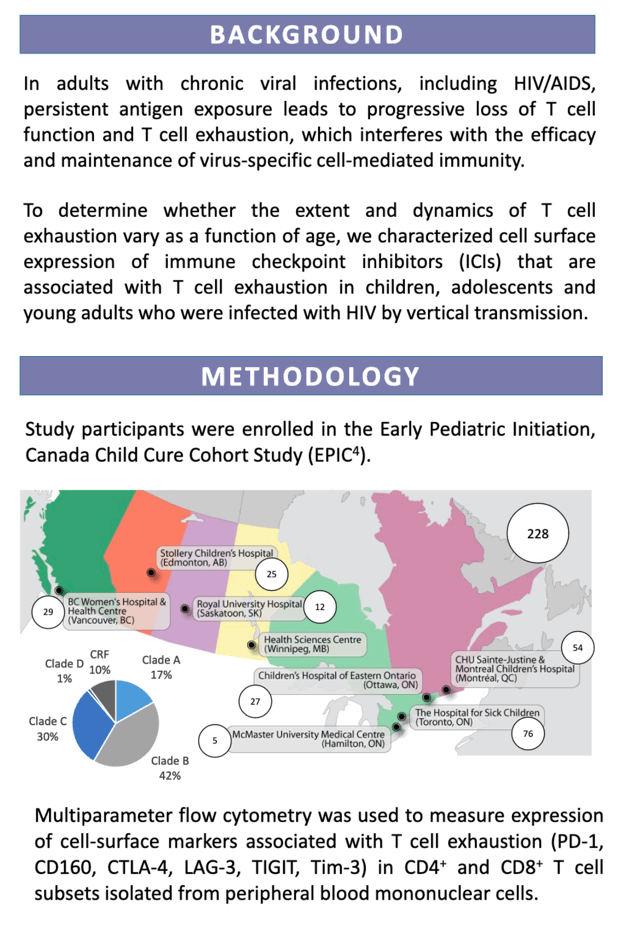
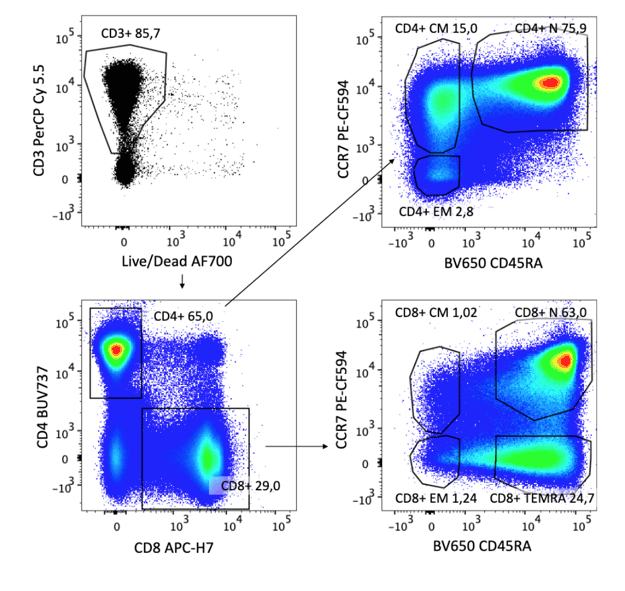
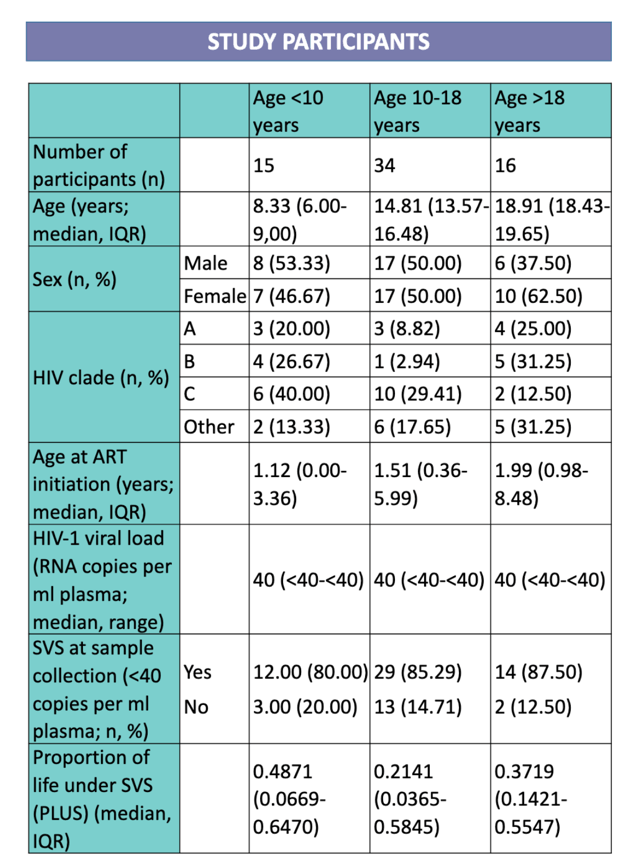
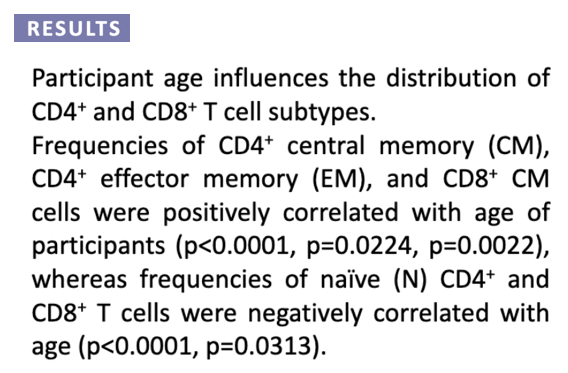
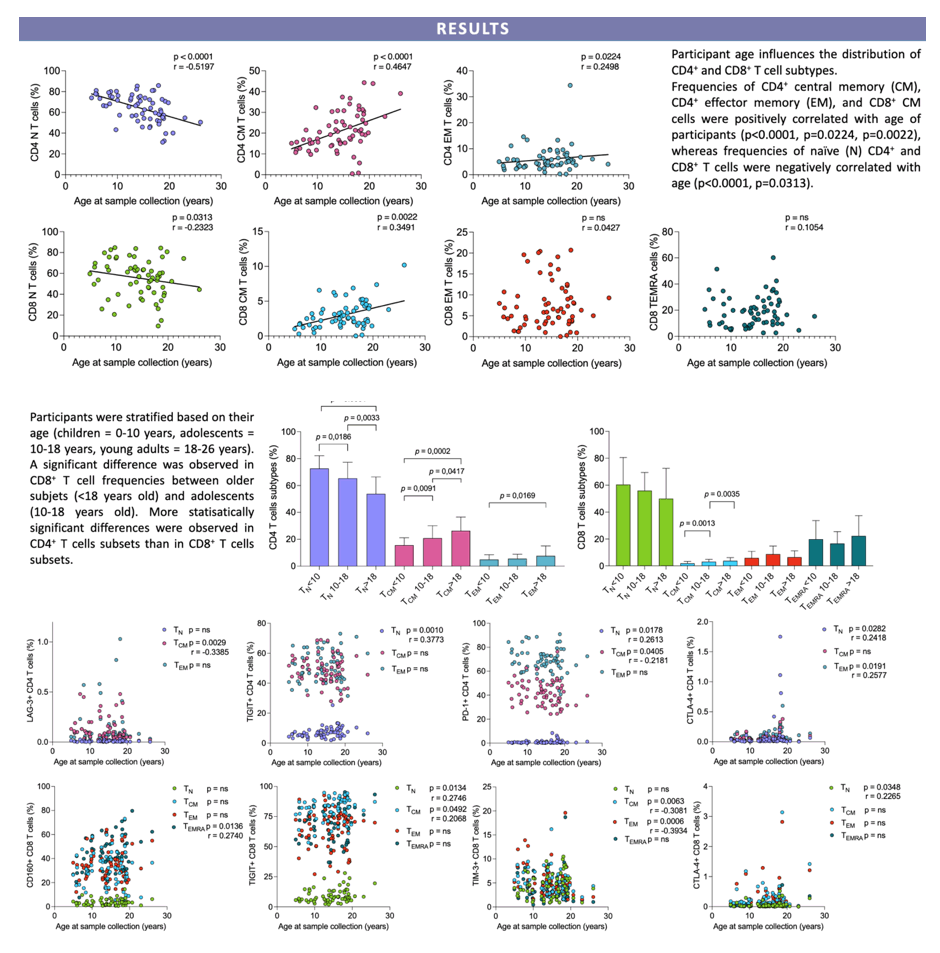

|
| |
|
 |
 |
|
|